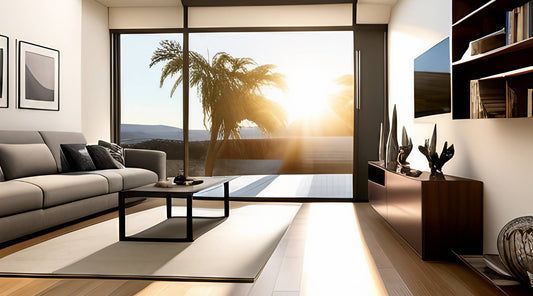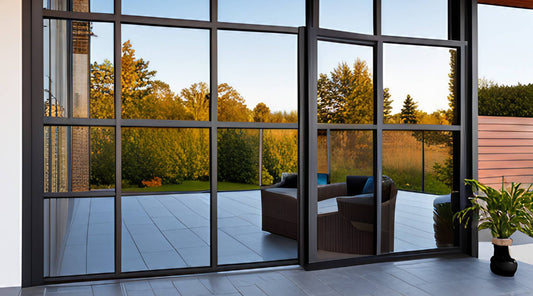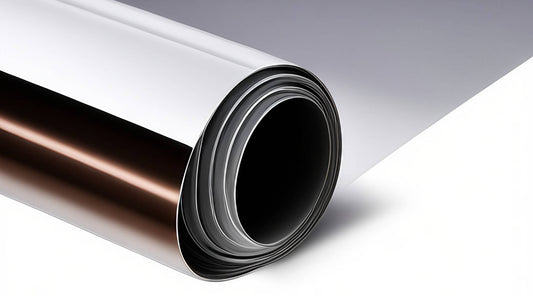In the world of interior design, finding solutions that blend style with function is key. Solar window films offer a perfect balance, enhancing both aesthetics and energy efficiency. These films are a game-changer for designers seeking eco-friendly options. They not only reduce energy costs but also protect interiors from harmful UV rays.
Solar window films come in various styles and tints, making them versatile for any design. They provide privacy without sacrificing natural light, a crucial factor in creating inviting spaces. Moreover, they are a cost-effective alternative to replacing windows, offering a sleek, modern look.
For interior designers, solar window films are an essential tool. They help create sustainable, stylish environments that meet clients' needs. Embrace this innovative solution to transform spaces with elegance and efficiency.
Understanding Solar Window Films: The Basics
Solar window films are thin layers applied to existing windows. They play a crucial role in enhancing energy efficiency. These films consist of multiple materials that absorb and reflect solar energy.
The technology behind them offers substantial benefits. Here are key components:
- Heat Rejection: Reduces heat gain, maintaining cooler interiors.
- UV Protection: Blocks up to 99% of harmful UV rays.
- Glare Reduction: Enhances comfort by minimizing glare.
These films come in various tints and styles, allowing for design flexibility. From subtle, neutral hues to bold tints, choices abound to fit any aesthetic. This versatility makes them ideal for different spaces, from homes to commercial buildings.
Understanding their eco-friendly nature is vital for designers. Solar films not only cut down on energy bills but also contribute to reducing carbon footprints. By opting for this smart solution, designers can offer clients a blend of function and sustainability, ultimately enhancing overall space quality.
How Solar Window Films Improve Energy Efficiency
Solar window films are highly effective for enhancing energy efficiency. Their design helps homes and offices maintain consistent indoor temperatures, reducing the reliance on heating and cooling systems. By blocking solar heat, they help in decreasing the energy consumption associated with air conditioning.
The technology behind these films allows them to reflect a significant portion of infrared light. This reflection plays a critical role in minimizing heat transfer into buildings. As a result, interiors remain cooler during peak sun exposure.
Another benefit is the prevention of heat loss during cooler months. By acting as an insulating barrier, solar films help retain interior warmth, reducing heating costs. This dual function makes them an all-season solution.
Key benefits include:
- Reduced Energy Bills: Lower energy consumption leads to cost savings.
- Comfortable Interiors: Consistent indoor temperatures improve comfort.
- Eco-Friendly: Decreased energy use supports sustainability.
Solar window films also mitigate UV radiation exposure. By blocking up to 99% of harmful UV rays, they protect furnishings and flooring from fading. This adds an extra layer of preservation to a home's interior design elements.
Incorporating solar films into design projects offers a dual benefit: aesthetics and function. By reducing energy costs, they provide an economic advantage. For homeowners and designers alike, they deliver a compelling case for sustainable living and design practices.
Aesthetic Versatility: Enhancing Interior Design with Window Films
Window films are more than just energy savers; they are a designer's ally. They come in a variety of styles and tints, offering countless possibilities. These films blend seamlessly with any decor, enhancing a room's aesthetic appeal.
Design flexibility is a key feature. Films can reflect modern minimalism or classic elegance, adaptable to any style. Their sleek finish can provide a contemporary touch, while their varied opacities offer depth and dimension.
Options aren't limited to plain films; they include decorative patterns and textures. These can mimic etched glass or unique designs, elevating a space's charm. They provide an opportunity to customize and personalize interiors, aligning with the designer's vision.
Notable aesthetic enhancements include:
- Decorative Patterns: Add unique designs or frosted effects.
- Color Variations: Choose from a wide palette to match decor.
- Textured Films: Create visual interest with embossed surfaces.
by Khanh Do (https://unsplash.com/@donguyenkhanhs)
These films also integrate functionality with style, providing privacy without sacrificing natural light. They transform spaces into private retreats while allowing daylight to spill in. This balance of light and privacy sets them apart, turning ordinary windows into focal points.
For designers seeking both beauty and practicality, window films are a versatile choice. They offer an innovative way to enhance interiors, achieving both aesthetic and functional goals.
Privacy Window Film: Balancing Light, Views, and Security
Privacy window films serve multiple purposes, from enhancing security to maintaining privacy. They allow you to obscure views from the outside without losing natural light inside. This balance is essential in both residential and commercial settings.
Cost-Effectiveness and Sustainability: The Eco-Friendly Choice
Solar window films offer a compelling eco-friendly and cost-effective option for interior designers. They help to significantly reduce energy consumption, which translates to lower energy bills. This efficiency makes them a desirable choice for clients seeking to optimize their energy use.
The upfront investment in window films is relatively low, especially when compared to replacing entire windows. Moreover, the long-term savings in energy costs make them an attractive solution. Not only do they save money, but they also reduce a building’s carbon footprint.
Installation and Maintenance: What Interior Designers Need to Know
Installing solar window films is a straightforward process, offering convenience for both designers and clients. These films fit seamlessly over existing windows, making them ideal for retrofitting projects. The quick installation minimizes disruption, keeping your projects on schedule.
Proper maintenance of window films is equally simple. Regular cleaning with non-abrasive materials ensures their longevity and performance. Thankfully, they resist scratches and are engineered to withstand varying environmental conditions.
Understand that selecting the right professional installer is crucial. Certified installers guarantee precision, ensuring the films adhere without bubbles or inconsistencies. This precision not only enhances appearance but also ensures optimal energy efficiency.
Key considerations for installation and maintenance:
- Certified Installers: Choose experienced professionals for a flawless finish.
- Regular Cleaning: Use gentle cleaning agents and soft cloths.
- Monitor Edges: Check for any lifting to maintain performance.
The Future of Energy-Efficient, Stylish Interiors
Window films represent a dynamic intersection of form and function in interior design. They offer a blend of aesthetics, efficiency, and sustainability.
by tommao wang (https://unsplash.com/@tommaomaoer)
By adhering to these practices, interior designers can ensure a high-quality, durable installation for their clients. Consequently, designers can confidently offer this solution, enhancing energy efficiency and aesthetic appeal effortlessly.
Creative Applications: Window Films in Modern Design Projects
Solar window films offer limitless possibilities for modern interior design projects. Their adaptability allows designers to experiment with new styles and functionalities. By incorporating unique patterns and textures, window films add an artistic flair to otherwise plain glass surfaces.
These films can become a focal point in a room, drawing attention and enhancing the overall design theme. For shared spaces, they partition areas with style while maintaining a unified aesthetic. This flexibility is especially beneficial in open-plan homes or offices, where defining spaces can be challenging.
In retail environments, window films are not just decorative—they also communicate brand messages effectively. Custom graphics on films can promote products or sales while maintaining a sleek storefront appearance. Such branding elements are easily removable, offering versatility for changing campaigns.
Creative Uses of Window Films:
- Decorative Patterns: Incorporate unique designs for aesthetic appeal.
- Space Division: Elegantly separate areas in open floor plans.
- Brand Graphics: Utilize films as a canvas for visual marketing.
by Sigmund (https://unsplash.com/@sigmund)
Through these creative applications, window films present endless opportunities for innovative interior designs. Designers can transform any space into a masterpiece while delivering practical benefits. This approach enriches both residential and commercial projects, making them truly stand out.
Choosing the Right Window Film for Your Project
Selecting the best window film for a project involves understanding specific needs and design goals. With numerous options available, it's crucial to consider both functionality and aesthetics. Factors such as light control, privacy, and energy efficiency will guide your choices.
Different spaces may require varied types of films. For instance, a sunroom benefits from solar control films, whereas a bathroom might need privacy films. Consider the purpose of each room and the inhabitants' comfort when making selections.
Additionally, the aesthetic outcome should align with the client's vision. Options range from frosted and tinted films to decorative patterns and custom graphics. Evaluate how each style complements or enhances the existing interior design elements.
Key Considerations for Choosing Window Films:
- Purpose: Determine energy efficiency, privacy, or aesthetics.
- Space Type: Match film to function—residential, commercial, or specialty areas.
- Design Preferences: Align choices with interior design themes.
by Thanos Pal (https://unsplash.com/@thanospal)
Ultimately, understanding the options and tailoring choices to the specific project will ensure satisfaction and functional excellence. These considerations lead to window film applications that enhance spaces both visually and practically.
Conclusion: The Future of Energy-Efficient, Stylish Interiors
Solar window films represent a dynamic intersection of form and function in interior design. They offer a blend of aesthetics, efficiency, and sustainability.
For interior designers, these films present an opportunity to innovate while meeting client needs. They provide stylish, eco-friendly solutions that align with modern architectural trends.
As we look to the future, the role of window films in energy-efficient designs will only expand. They stand as a testament to the potential of marrying design with technology to create functional, beautiful spaces.












